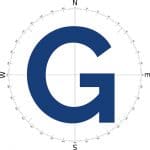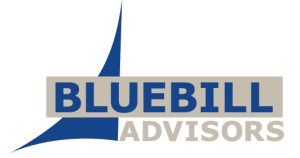Tumbleweed announced the latest update to Tumbleweed SecureTransport, the company’s Managed File Transfer solution. This release of SecureTransport extends the security, authentication, and reliable delivery capabilities enterprises need to protect the privacy of sensitive data exchanged with trading partners and customers. SSH (Secure Shell) has been added as an additional secure file transfer protocol. SecureTransport now supports secure file transfer using HTTPS, FTPS (FTP over SSL), SFTP (FTP over SSH), PGP, and AS2. Turnkey integration with eTrust Siteminder single sign-on (SSO) from Computer Associates enables organizations to leverage existing authentication infrastructure to manage data access and security policies for customers, partners, and internal users, protecting data from unauthorized access. An updated AS2 engine now supports large multi-GB file transfers. SecureTransport provides reliable data transfer, guaranteed delivery, strong file integrity checking, and checkpoint/restart, even over unstable network connections or dial-up lines. Tumbleweed SecureTransport is an enterprise-class managed file transfer solution for moving financial transactions, critical business files, large documents, XML, and EDI transactions over the Internet and private IP networks. http://www.tumbleweed.com
Page 447 of 935
Coveo Solutions Inc. announced that it is launching a free, fully-functional version of Coveo Enterprise Search for SharePoint (CES for SPT). This new free version of CES for SPT supports indexing of up to 5,000 SharePoint documents. CES for SPT is a plug-and-play enterprise search solution that integrates with existing SharePoint environments and provides a user interface within SharePoint to make the transition to searching with CES for SPT easier for users. The free version of Coveo Enterprise Search for SharePoint is available for download.
Adobe Systems Incorporated and Covansys Corporation announced they are working together to deliver benefits and services administration solutions to federal, state and local government agencies. The combination of Adobe LiveCycle software and Covansys systems integration and consulting services will automate benefits enrollment, extend processes beyond the network to field workers and service providers, and comply with privacy and security mandates. The first outcome of this relationship will be a solution for delivering unemployment benefits and services to constituents. With the joint Adobe and Covansys solution constituents will be able to download and fill out intelligent forms at their convenience, and submit them electronically or by paper. http://www.adobe.com,
Dassault Systemes announced the free availability of the 3D XML Specifications and Player, which will enable users to view and manipulate rich 3D data in a variety of industrial, consumer and commercial environments. 3D XML is a universal, lightweight XML-based format that enables users to share live, accurate 3D data. Based on XML, it allows any software program to read, write, and enrich 3D XML content using standard tools. This capability is intended to facilitate broad adoption of 3D and will lower the cost of converting files from existing 3D formats. It provides multi-representation 3D structure, and compression for complex, accurate geometry, enabling rapid file transmission and shorter load times. Dassault Systemes uses the 3D XML format in its entire line of products: CATIA, DELMIA, ENOVIA, SMARTEAM, and SolidWorks. Moreover, all members of the CAA V5 and SolidWorks developer communities will de-facto endorse the 3D XML format and will deploy it on a wide scale to their end-users. The 3D XML Player leverages the 3D XML Specifications and extends the use of 3D beyond traditional PLM applications. 3D content can now be incorporated into a variety of media, including but not limited to technical documentation, maintenance manuals, marketing brochures, websites, and email. The 3D XML Player is designed to work with a wide range of application suites, including Microsoft Office, on the web with the Internet Explorer browser or as a standalone application. It delivers Internet Explorer and Microsoft Office plug-ins, with 3D XML drag-and-drop capabilities. http://www.3ds.com
FileNet Corporation introduced FileNet P8 Active Storage and Retrieval (ASAR) services, a key technology capability of its FileNet P8 Enterprise Content Management (ECM) platform and the main element of the Company’s strategy to provide customers with an intelligent approach to Information Lifecycle Management (ILM). ASAR services enables integration between the FileNet P8 ECM platform and storage vendor’s technologies including EMC, HP, Hitachi Data Systems, IBM, Network Appliance, Plasmon and Sun, with the ability to intelligently manage content migration to different data storage tiers and individual storage platforms based on the business value of content. FileNet P8 Active Storage and Retrieval Services FileNet P8 Active Storage and Retrieval (ASAR) services resides at the data services layer of the FileNet P8 platform and integrates to the storage infrastructure layer. ASAR services consist of a Storage Policy Object that allows FileNet to provide lifecycle data movement among rewritable (e.g. EMC and Hitachi Data Systems SAN products) and fixed content stores (e.g. NetApp SnapLock magnetic WORM protected storage). ASAR services offers an application interface supporting virtually any type of magnetic disk storage device, as well as removable media technologies. Specialized connectors to magnetic WORM products such as SnapLock from Network Appliance enable tight integration with compliance storage devices. http://www.filenet.com
Writing for eWeek, Paul Roberts had a nice roundup last week of Cisco’s upcoming XML announcements. What’s even more interesting is how much technical information about XML is already on Cisco’s website.
W3C announce the advancement of Voice Extensible Markup Language (VoiceXML) 2.1 to Candidate Recommendation. Fully backwards-compatible with VoiceXML 2.0, the document standardizes eight additional features implemented by VoiceXML platforms: data, disconnect, grammar, foreach, mark, property, script, and transfer. Comments are welcome through 11 July. http://www.w3.org/Voice/
ZyLAB announced the availability of its new FDA-compliant content-management solution for the pharmaceutical and biotechnology industries. The ZyIMAGE solution is used for digital capture and archiving of lifecycle GMP records, as well as all paper records requiring back up, such as validation protocols, validation reports and batch records. This ZyIMAGE solution also controls document review and access through a specialized interface or web browser, while maintaining a full audit trail of all actions performed. Customers are able to adapt and implement the ZyIMAGE solution in departments across the firm, such as R&D, engineering, manufacturing, quality control, distribution, and global operations. In accordance with FDA guidelines, the audit trails utilized by this ZyIMAGE solution for relevant actions are fully compliant with 21 CFR Part 11. Full documentation has been prepared and approved for the ZyIMAGE solution. http://www.zylab.com

